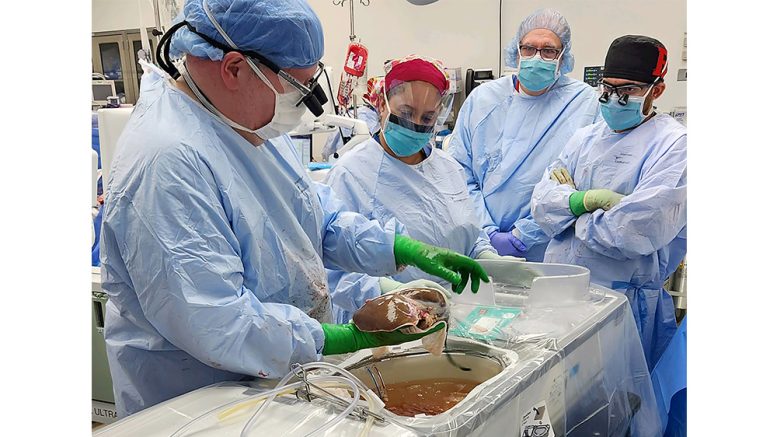An Indiana woman who died late last year made history – for two reasons.
First, at 90, she is the oldest person on record in Indiana to be an organ donor. Second, her liver donation was the first coordinated by a U.S. organ procurement organization – Indiana Donor Network – using new technology to preserve and protect the donated liver after recovery in Indiana and during transport to a Midwest transplant center.
The milestone deployment of this innovative technology was the product of an FDA-authorized continued access study over the past two years, evaluating the use of the LifePort Liver Transporter.
“We strive to find new and innovative ways to utilize technology and push the boundaries of what is possible for donation and transplantation,” Indiana Donor Network President and CEO Kellie Tremain said. “Our goal is to end the wait for lifesaving organ transplants. This is another step in that direction.”
Manufactured by Illinois-based Organ Recovery Systems, the LifePort Liver Transporter emulates a human body through a process called oxygenated hypothermic machine perfusion. This process pumps an oxygenated, nutrient-rich preservation solution through the liver to maximize preservation outside the body. Nearly 30 Indiana Donor Network advanced clinical coordinators and surgical recovery specialists have been specifically trained to use the device.
With machine perfusion, a donated liver can remain viable for transplant for a considerably longer time. Using the traditional preservation method of static cold storage, a donated liver remains viable for transplant for less than six hours. Keeping a donated liver functioning after the recovery surgery allows more time to test and assess the organ’s health. It can also improve a liver’s function, which may allow more donated livers to be available for transplant.
Indiana Donor Network first utilized the LifePort Liver Transporter in the November 2023 transplant coordination and now awaits FDA clearance for unrestricted clinical use of the device throughout the U.S.
While the FDA continued access study continues, Indiana Donor Network can currently utilize the machine when requested by any of the four participating transplant centers that are also participating in the trial, including University of Cincinnati Medical Center, University of Chicago, Northwestern University and University Hospital-Rutgers New Jersey Medical School.
“One of the biggest problems in organ transplantation is availability. There are far more people waiting for a lifesaving transplant than there are available organs,” Indiana Donor Network Director of Organ Services Sherry Quire said. “This breakthrough technology limits organ damage during preservation, improves patient outcomes and increases utilization of more donor livers for even more lifesaving transplants.”
Use of the LifePort Liver Transporter is the organization’s second venture into implementing perfusion technology to increase the rate of organ transplantation success. In 2021, Indiana Donor Network began utilizing kidney perfusion devices to sustain function and extend testing and transportation time for donated kidneys. In 2023, the organization’s 12 kidney perfusion devices kept 446 donated kidneys functioning outside the body from recovery to transplantation.
Indiana Donor Network is the federally designated organ recovery organization that coordinates organ and tissue donation in Indiana and transplantation throughout the U.S. Its mission is to save and enhance the quality of life through organ and tissue donation and transplantation. Its vision is to be a leader in organ and tissue recovery. Founded in 1987, the organization coordinates donation in 85 of the state’s 92 counties and serves transplant hospitals throughout the U.S.

